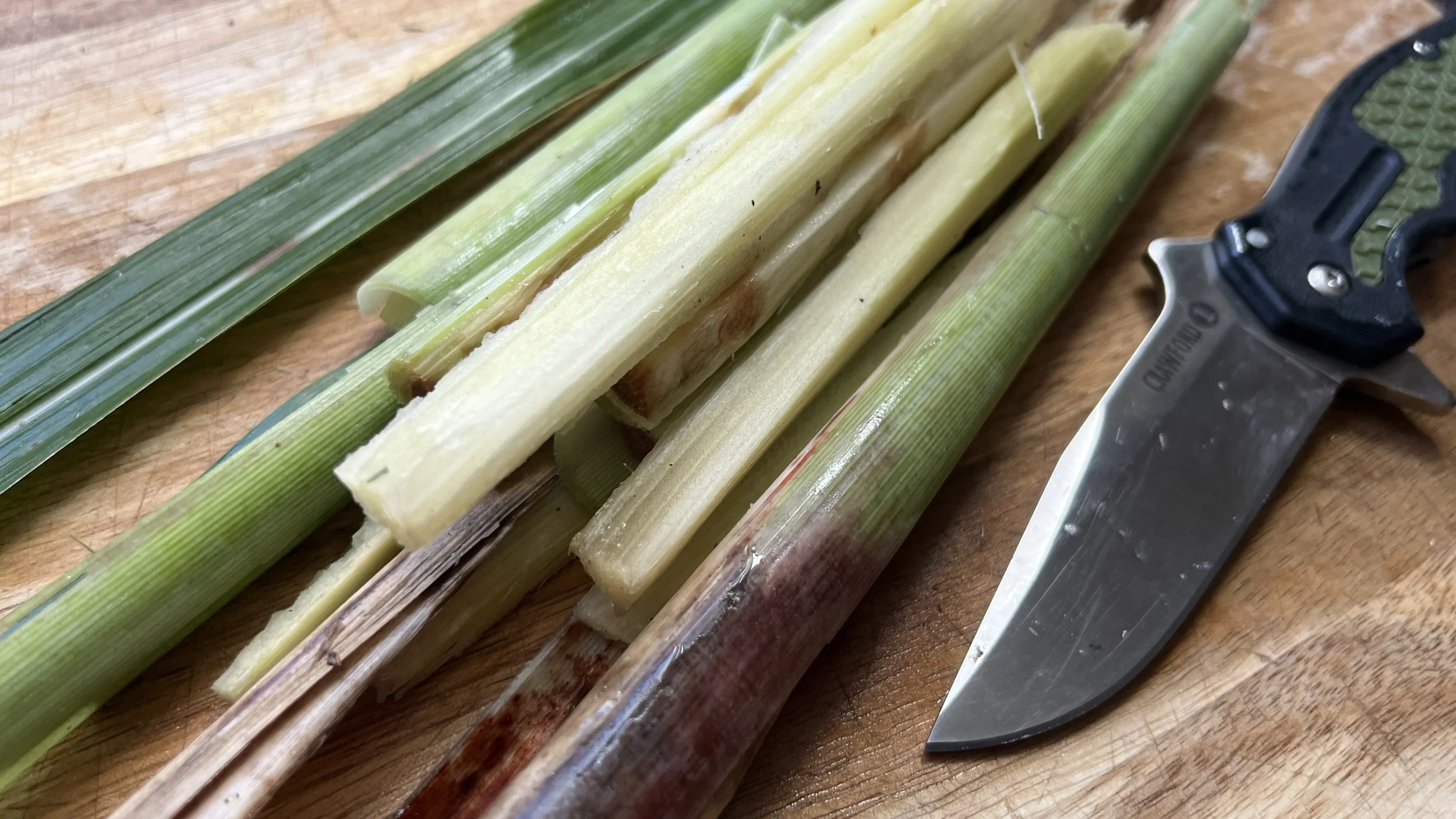Heirloom Sugar Cane
Sugar cane, variety Co. 290
Remembering the Colors and the Flavors of the Past
by Jude Theriot
You can’t go anywhere in St. Martin Parish without seeing sugar cane. More than any other plant, its cycles of growth and harvest set the quiet rhythm of everyday life here. In fact, sugar cane is so commonplace that we often don’t notice it at all. But snap a stalk of it in half, look at it up close, and you’ll see that it’s truly outrageous: this towering, jointed grass of a plant originally from New Guinea, by way of Indonesia and India, that has found such a comfortable home here.
Sugar cane is a close cousin of bamboo, and botanically speaking, they share many features, their segmented stalks and their long, blade-like leaves most notably. Some varieties of sugar cane even reveal flashes of their tropical roots in hints of red, purple, and gold that pattern against the green.
Sugar cane, variety Co. 290
When a plant’s stalk is as sweet as this one’s was in the wild, people take notice. And, as with any useful plant, human hands and human ingenuity have reshaped it over time, selecting and crossing varieties to improve its yield. India was an early center of sugar cane cultivation and breeding, and many of the varieties introduced to the United States originated there. Over time, these were hybridized into the disease-resistant, high-yielding canes that dominate the fields today. But those modern varieties weren’t necessarily the most flavorful, or the most beautiful.
Sugar cane, variety Co. 290
An early variety of sugar cane, Co. 290, was brought from India to Louisiana in the early 20th century. With its striking deep purple stalks, thick cores and rich, flavorful juice, it quickly became a favorite, not just among farmers, but also among families, perfect for making a dark and deeply flavored molasses or just splitting open with a pocketknife and chewing fresh.
It grew not only in fields, but in backyards, along fence lines, and anywhere a stalk could take root. Back then, making syrup was a community affair: mules turning cane mills, juice flowing into iron pots, fires stoked beneath them as watchful eyes waited for the bubbling foam to turn amber and thick.
Sugar cane, variety Co. 290
But time brought change. As commercial sugar production became more mechanized, and markets demanded higher sugar content and larger yields, heritage varieties like Co. 290 were pushed out by newer, more efficient hybrids. Today’s sugar cane grows taller, greener and much more densely packed than it did a hundred years ago. And Co. 290 survives only in the odd backyard patch, tended by someone who can appreciate its old-fashioned beauty and who knows the value of moving slowly in a fast-moving world.
Sugar cane, variety Co. 290






